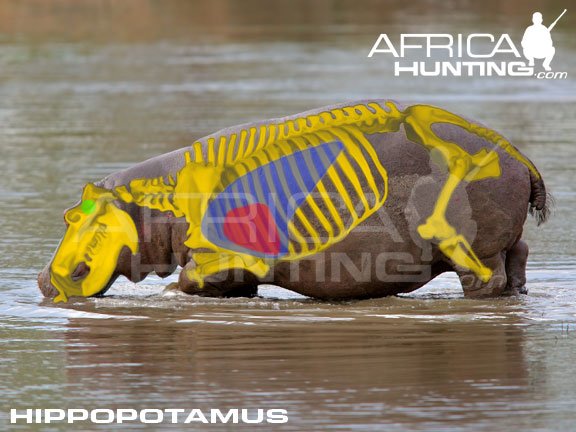
So, let’s dive into the world of hippos. Here’s the thing: while they might not be hunting in the traditional sense like lions or wolves, their approach to feeding and gathering resources is quite interesting. It’s not just about munching on grass; there’s a strategy at play, and understanding that is key to appreciating these mighty beasts.
What Do Hippos Eat?
Hippos are primarily herbivores, which means they mainly eat plants. However, their diet is quite diverse. They’re known for grazing on grasses, which is typically what they munch on during the coolness of the night. Imagine a restaurant that opens only at night—hippos are like the night owls of the animal kingdom when it comes to their dining hours.
Typical Foods in Their Diet:
- Grass (their favorite!)
- Fruits like watermelons and bananas when available
- Leaves and some aquatic plants
Hippos can consume around 80 to 100 pounds of grass every night! That’s quite a buffet! Their wide mouths and large teeth are adapted to help them graze efficiently. You might be wondering how they manage all that chomping. Well, hippos have large, flat molars that are perfect for grinding up fibrous grass, allowing them to extract the nutrients they need.
Hunting or Foraging: What’s the Difference?
You might be surprised to learn that hippos don’t engage in hunting like many other predators. Instead of actively pursuing their food, they forage. Foraging is more about seeking out and gathering food from the environment rather than chasing it down. This approach is just as effective for hippos, especially given their size and weight.
Hippos are known to travel up to six miles each night to find the best grazing spots. Think of it like going on a food adventure. They might start at a riverbank and stroll through the wilderness, looking for the freshest grass. While they may not be hunting in the traditional sense, their movements are strategic—always on the lookout for safe and rich feeding grounds.
How Hippos Use Their Environment
The environment plays a crucial role in the feeding strategies of hippos. They are often found in rivers and lakes, which provide not just a habitat but also a source of food. The water protects them from predators, and it’s also a place where they can cool off during the day—after all, hippos have thick skin that can easily dry out.
During the night, hippos come ashore to graze. This is where their relationship with the environment gets interesting. Since they need to conserve energy to walk long distances, hippos prefer areas with abundant grass close to the water, minimizing the risk of dehydration while maximizing their grazing time. They are incredibly in tune with their surroundings!
Social Dynamics and Feeding Behavior
Hippos aren’t just solitary eaters; they’re quite social! They often graze in groups called pods. These pods usually consist of females and their young, while males tend to be more solitary or form smaller groups. You might be pondering how this social structure affects their feeding strategies.
When they feed in a group, they can effectively monitor their surroundings for threats, such as lions or crocodiles. Plus, they can cover more ground, helping each other find the best grazing spots. The shared responsibility of keeping an eye out for danger allows hippos to focus on eating—making their mealtime a bit like a safe family picnic in the wild!
Defensive Strategies During Feeding
Despite their primarily herbivorous diet, hippos are known for being one of the most dangerous animals in Africa! When feeding, they can become quite aggressive if they feel threatened. Their massive size and powerful jaws can be intimidating.
Honesty, if you ever find yourself near a hippo while it’s grazing, it’s best to keep your distance. They’re known to charge at threats, and their thick skin hides incredibly strong muscles. Hippos can run surprisingly fast on land, making them both formidable and fascinating. Plus, their ability to submerge quickly and move gracefully in water makes them well-equipped to defend their territory.
Impact on the Ecosystem
The diet and feeding strategies of hippos significantly impact their ecosystem. As they graze on grasslands, they shape the landscape, helping maintain the balance between grassland and aquatic systems. This act allows for new plant growth, which can support other wildlife and promote biodiversity.
Furthermore, when hippos spend time in water, they help aerate the environment with their movements. Their waste also enriches the water with nutrients, providing a boost to aquatic plants and fish. You could say that hippos are nature’s gardeners, contributing to a healthy ecosystem simply by going about their business of eating and foraging!
So, there you have it—the diet and hunting strategies of the hippopotamus are more complex than they might first appear. These gentle giants have a unique way of foraging that connects them deeply to their environment and the ecosystem at large. While they may not be hunters in the traditional sense, their approach to feeding is thoughtful, strategic, and crucial for their survival.
Next time you think about hippos, remember they’re not just big, cute animals. They play an essential role in maintaining the balance of their habitats. It’s a reminder of how every creature, no matter how clumsy or cuddly they seem, has its own expertise in the dance of life. And who knew a hippo could be so fascinating?

